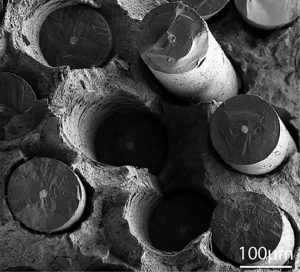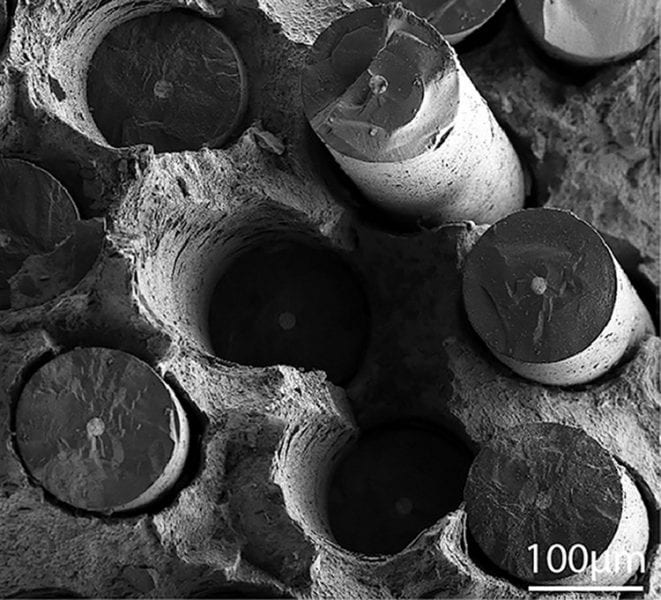 Metal matrix composites (MMCs) provide superior properties compared to monolithic materials. MMCs typically have superior strength and stiffness while reducing density. An MMC is a two-component material where high strength ceramic fibres such as silicon carbide (SiC) reinforce a strong and ductile metallic matrix. Typically the volume fraction of the fibres is between 30-40%.
Metal matrix composites (MMCs) provide superior properties compared to monolithic materials. MMCs typically have superior strength and stiffness while reducing density. An MMC is a two-component material where high strength ceramic fibres such as silicon carbide (SiC) reinforce a strong and ductile metallic matrix. Typically the volume fraction of the fibres is between 30-40%.
Creating an MMC that uses a strong and lightweight matrix such as a titanium alloy enables the development of extremely strong materials. These materials are tremendously relevant for industries where high strength coupled with low weight is required, such as the aerospace sector.
In this paper the authors develop a MMC which uses a continuous fibre SiC reinforcement coupled with a Ti-5Al-5Mo-5V-3Cr (Ti-5-5-5-3) matrix. Ti-5-5-5-3 is the strongest commercially available titanium alloy in the forged condition. Therefore an MMC based on this matrix would possess excellent strength while maintaining a low weight due to the low density of titanium.
The authors produce matrix foil using a pack rolling process, this enabled fabrication of the MMC using a foil-fibre-foil method, which is significantly cheaper than deposition methods that are used in the production of MMCs. The resultant MMC had a tensile strength of 2GPa, density normalised this is equivalent to a 3.5GPa steel. Currently the highest strength steels typically have a maximum tensile strength of 2GPa. In addition, the fatigue behaviour of the MMC was found to be better than other MMCs, which are made using a titanium matrix.
Finally, the authors present high-resolution microscopy of the optimised titanium microstructure, interface between the ceramic SiC fibres and metallic Ti matrix, and the fracture surface of the failed tensile and fatigue specimens.

















